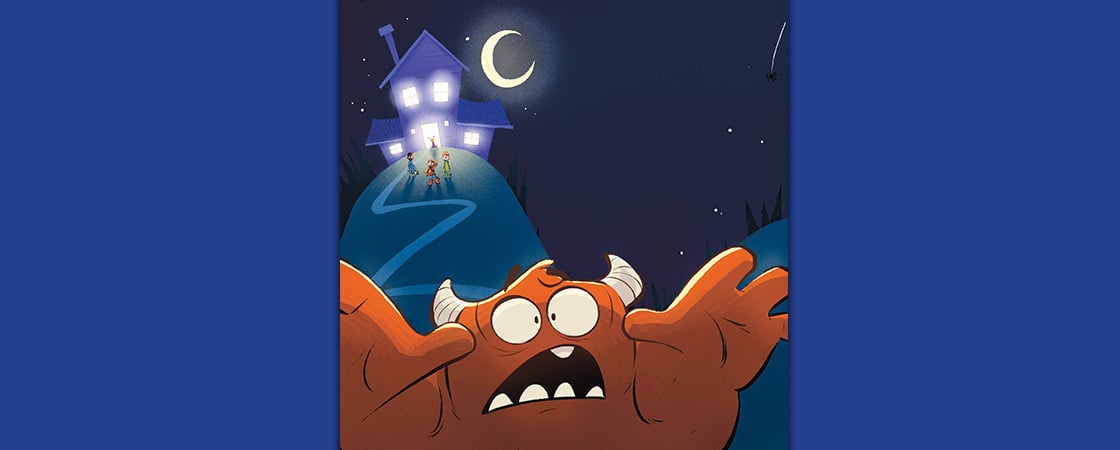The house stood dark and eerie
on a hill above the shore.
I tiptoed up and—knock, knock, knock—
I waited at the door.
Then—creak, creak, creak—it opened.
What a happy sight to see!
Each creature at the party
was a monster just like me!
We laughed and played. We sang some songs.
We danced in furry feet.
Then every guest removed a mask
as we sat down to eat.
Oh, what a frightful thing to see!
I ran straight home and hid!
How scary to discover
every monster was a kid!

